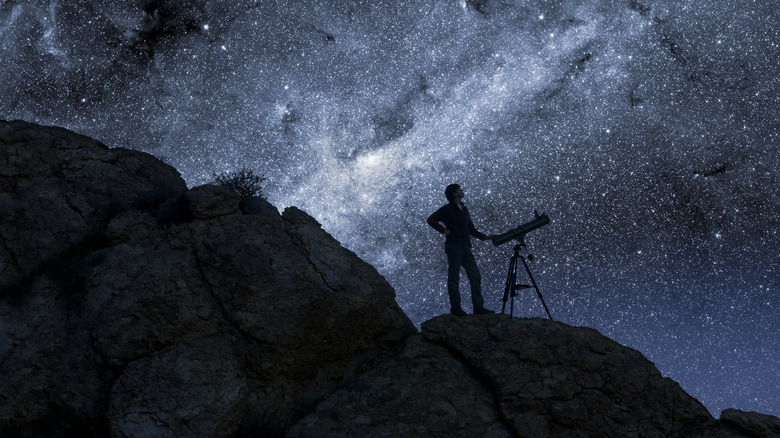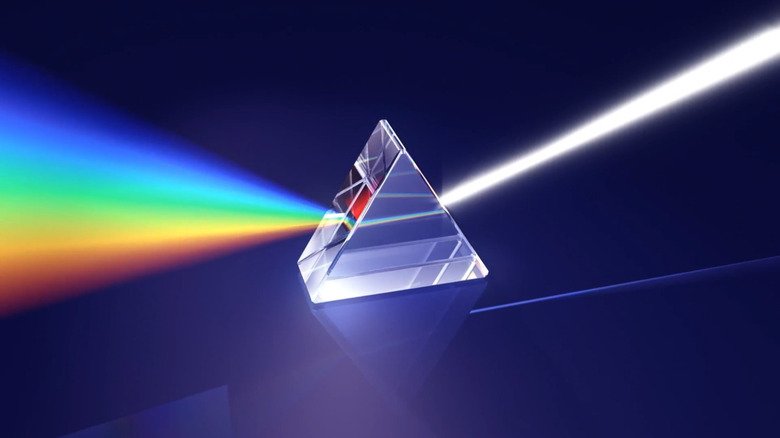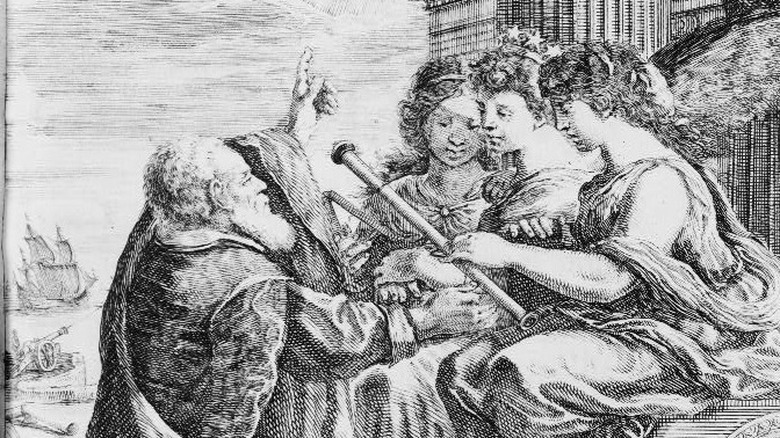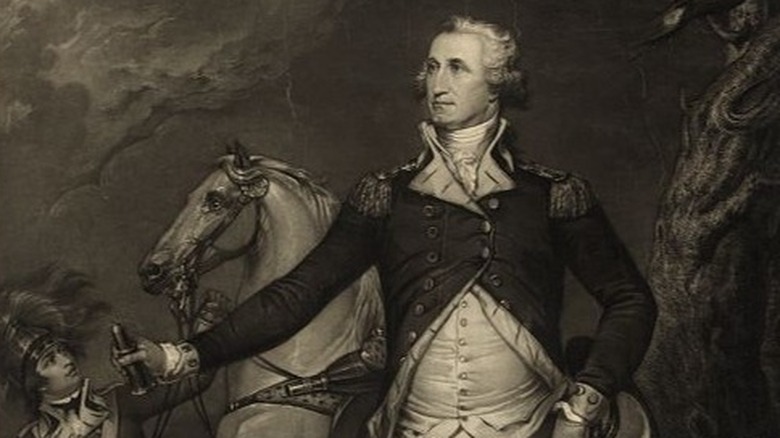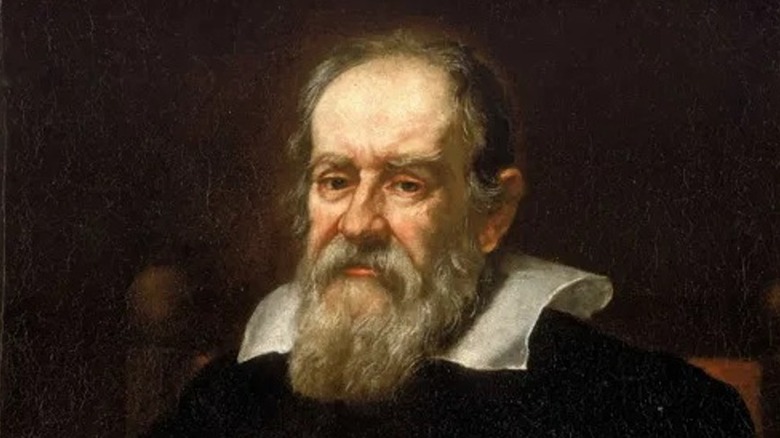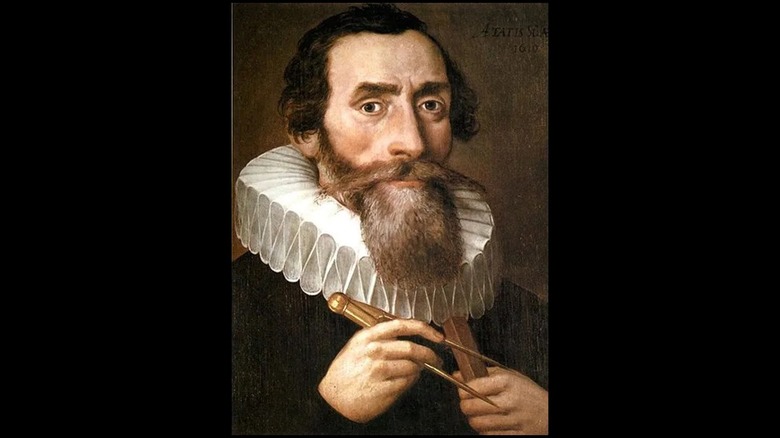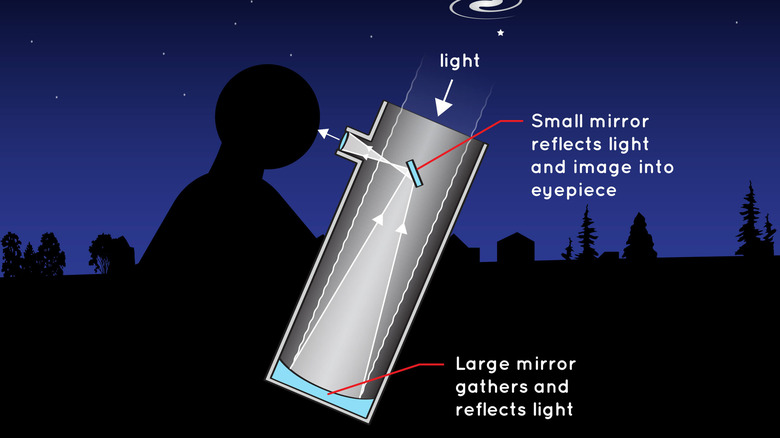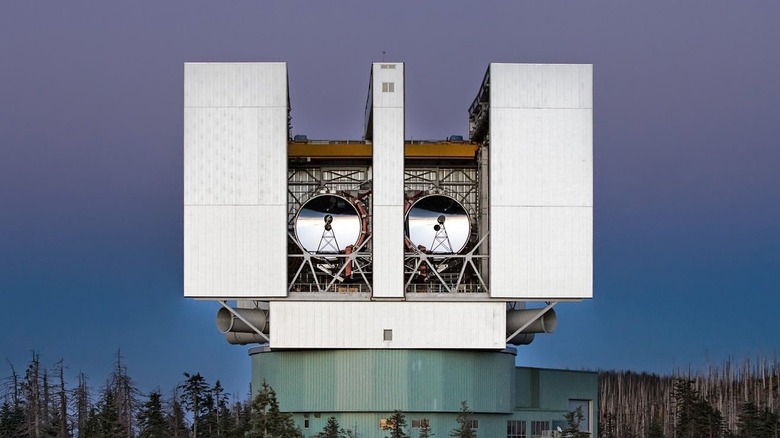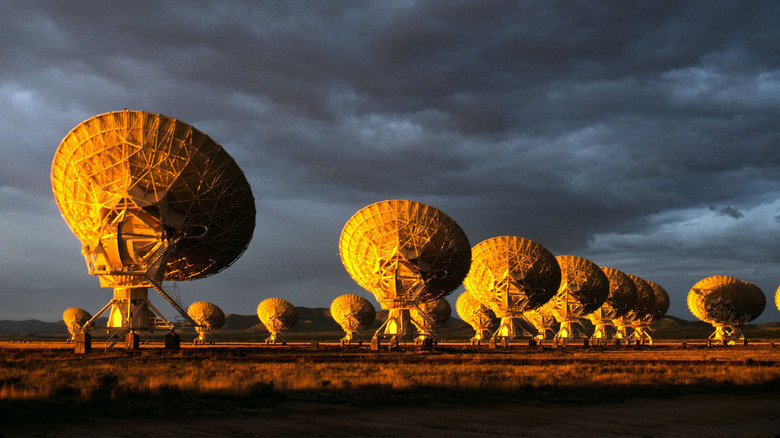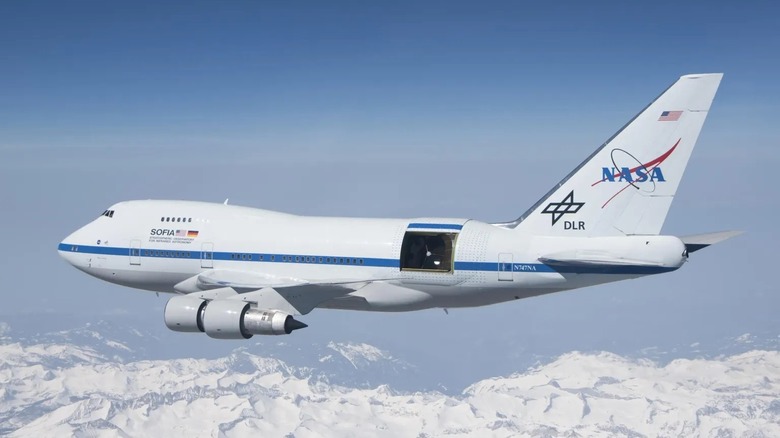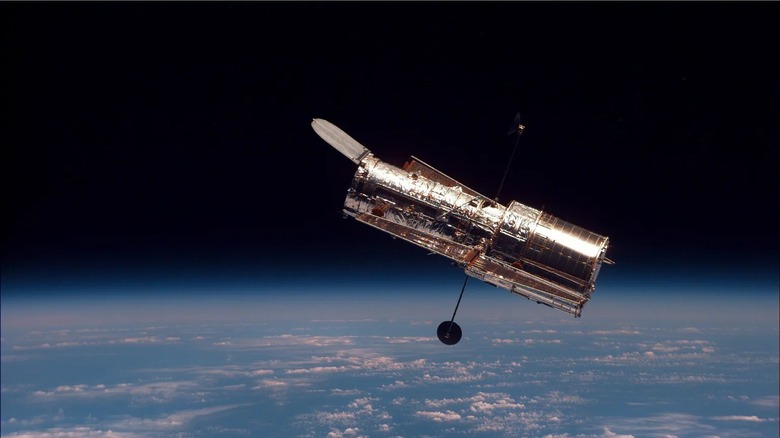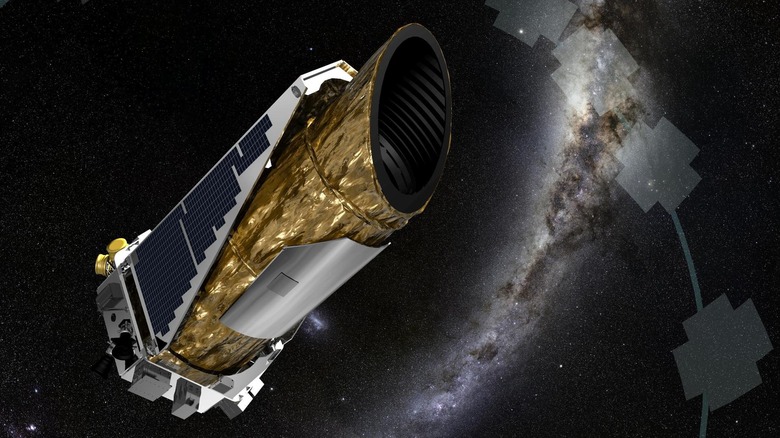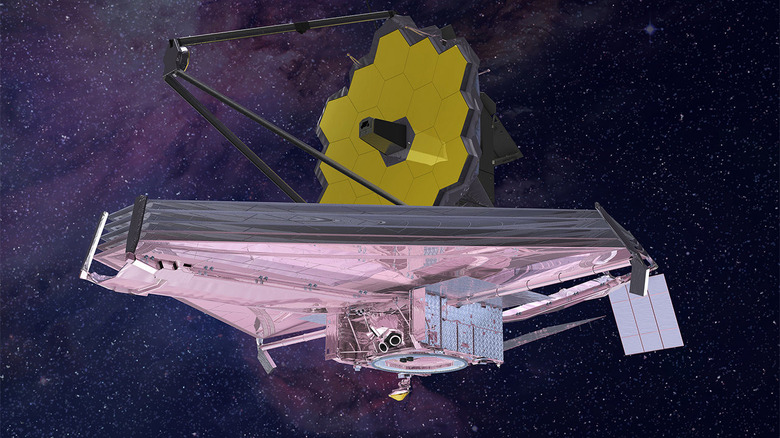The Evolution Of The Telescope, From Galileo To Hubble And Beyond
The telescope began as a relatively simple device, born out of optical experimentation. It combined a series of lenses and mirrors to collect and magnify light, allowing the user to see far away objects. Soon, they were set upon the heavens, and over the last few centuries, the telescope has evolved to capture images of increasingly distant objects with incredible detail.
In addition to capturing visible light, modern telescopes have evolved to include instruments which gather light from outside the visible part of the electromagnetic spectrum. Our machines can gaze at the visible and invisible parts of the cosmos and translate that information into something we can look at and appreciate.
Astronomers have constructed telescopes of every kind all over the world, massive observatories designed to pick up faint traces of light from millions of light-years away. They've even built a few especially powerful or specialized telescopes and launched them into orbit. Some of humanity's modern telescopes look nothing like their predecessors, but they share a common purpose and history. Here's how mankind learned to see the stars.
The study of optics
The investigation of light and optical properties stretches back centuries, at least to the ancient Greeks, Egyptians, and Mesopotamians. In fact, even artificial lenses date back to as early as 700 BC, in Egypt and Mesopotamia. These investigations centered on things like the light-bending ability of water. Early observers recognized that rainbows were created because raindrops act like naturally occurring lenses. Early optical researchers replicated raindrops by filling hollow glass spheres with water and performing experiments on them.
Despite those advancements, ancient peoples were operating from a flawed assumption which stymied progress. They believed sight began in the eye and beams of inner light moved outward, not the other way around. As a result, it never occurred to them that you could correct impaired vision with a lens. It took until the 13th century for our understanding of optics and lens craft to progress enough for the first pair of eyeglasses.
The lens and its ability to bend light is the central innovation in the study of astronomy, but it took a while to germinate. Even after the first eyeglasses, it took another three centuries before lenses were used to magnify small or far away objects.
First invented in 1608, by Hans Lippershey
There is some contention surrounding who first invented the telescope, but most accounts credit Hans Lippershey, a lens crafter from the Netherlands. The contention comes from the fact that lenses were being improved and experimented on by many people in many places. As is often the coincidental case, other people may have made similar innovations around the same time.
The story goes that some children were playing with a pair of lenses outside Lippershey's workshop, and noted they could make distant objects appear larger. Lippershey then experimented with lenses in a tube and settled on a design which combined a concave lens and a convex lens. He called his device a "looker" and it was capable of magnifying objects albeit kind of poorly.
Lippershey applied for a patent in exchange for not selling his designs to foreign nations. His government declined, noting that two other people had also claimed to make the same invention and that it was too easy a design to copy. Instead, they offered him payment in exchange for developing a binocular form of his invention. Shortly after he began producing his binoculars, news of the telescope reached Galileo.
Early terrestrial (non-astronomical) uses
These days, the telescope is mostly closely associated with the night sky, but it's also useful on land and at sea. It's unclear if spectacle-maker Hans Lippershey ever pointed his "looker" telescope at the sky, but we know he used it to look at things on Earth. In his patent request to the States General of the Netherlands, Lippershey requested payment in exchange for not selling his design to foreign leaders, noting the invention's obvious military applications.
Outside of a small group of astronomical aficionados, the early telescopes and binoculars were used mostly for terrestrial activities, according to the Library of Congress. Pretty soon, people realized they could turn those instruments toward the night sky and reveal a previously unseen universe in grand detail.
Still, even Galileo recognized the ground-based uses of telescopes. After building his first telescopes, Galileo demonstrated the new instrument to the Venetian Senate, including military leaders. While he was certainly interested in its astronomical potential, he also expressed commercial and military applications.
Galileo's designs and observations
While Galileo didn't invent the telescope, he is the person most inextricably tied to its use and development. The field of optics had become so established, and the principles behind Lippershey's invention so intuitive, that Galileo started making his own telescopes practically as soon as he heard about them. After replicating Lippershey's "looker," Galileo set about improving the design. He built increasingly powerful telescopes, ultimately building devices capable of magnifying the cosmos to 30 times their original size.
Galileo used his devices to rewrite humanity's understanding of the cosmos and our place within it. Prior to Galileo, the Moon was believed to be a perfect, heavenly sphere, a smooth celestial globe hovering in the sky. Even with relatively limited magnification, Galileo revealed the Moon's mountainous peaks, low valleys, and craters.
Additionally, Galileo observed Jupiter and noted the presence of a few background stars arranged in a line. When he looked at the gas giant on successive nights, he noted that the arrangement of those background stars had changed. In what can be described as a eureka moment, Galileo realized those stars were, in fact, moons orbiting Jupiter. That discovery helped support a heliocentric model of the solar system — a belief so radical at the time that it landed Galileo on house arrest until his death.
Kepler's contribution — early refracting telescopes
One of the biggest limitations of Galilean telescopes, with their combination of a convex and concave lens, was their narrow field of view. Galileo used them to survey the lunar surface, but he had to do it a piece at a time. The field of view was so narrow that only about half of the Moon could be seen at any given moment.
In 1611, Johannes Kepler improved on Galileo's design by making one simple change. He replaced the concave lens with a second convex one. As a result, the light rays converge as they exit the eyepiece, creating a wider field of view, and one which is more evenly illuminated.
The Keplerian design does have the downside of producing an upside down image, but in astronomy that doesn't really matter. There's no true up and down in space. In some cases, an additional lens is added to turn the image right side up. This one simple change from Kepler allowed for considerably higher magnification, and the majority of refracting telescopes are designed this way, even today.
Reflecting (or Newtonian) telescopes
Early telescopes were all refracting telescopes of the kind Galileo made. While they revolutionized the science of astronomy, they had some innate downsides. The act of refraction also causes chromatic aberration, a phenomenon that causes colors to get smeared out. This can be seen in a rainbow or in light traveling through a prism. Each wavelength of light refracts at a slightly different rate, causing the colors to separate and spread.
In practice, chromatic aberration makes it difficult to focus, because different wavelengths of light have different focal lengths. The idea of using mirrors instead of lenses had already entered the collective consciousness during the 1600s, but there were challenges in creating mirrors of sufficient curvature and clarity. Isaac Newton was the first to really make it work.
Newton's reflecting telescope consisted of a single curved main mirror, coupled with a smaller flat mirror positioned at the focal point and aimed at 45 degrees. Light travels into the telescope, bounces off a curved mirror at the bottom which aims it all into a focal point, where it hits a mirror and is bounced to an eyepiece at the side of the telescope. Newton presented his device to the Royal Society in 1672, but they were slow to gain popularity. Since then, refinements in the manufacture of mirrors have greatly improved and today, most major observatories are Newtonian reflectors.
Large ground-based observatories
During the nascent years of the telescope, most devices were relatively small, even handheld. When you consider the modern astronomy hobby and at-home telescopes, that mostly remains true today, but professional astronomy is another story. Over the last few centuries, we've managed to build some truly gargantuan telescopes, the likes of which Galileo never dreamed.
Today's largest ground-based telescope is a matter of some debate, but they are huge by comparison to early iterations. The Gran Telescopio Canarias in Spain has the largest single segmented mirror, with an effective aperture of 10.4 meters. Arizona's Large Binocular Telescope (LBT) features two twin 8.4-meter telescopes with a combined view of 11.8 meters. In 2017, astronomers used the LBT to glimpse the OSIRIS-REx spacecraft (a machine only about 20 feet long) from 7 million miles away.
Even larger observatories have been planned including the Extremely Large Telescope (ELT), under construction in Chile's Atacama Desert. It will feature a segmented primary mirror 39.3 meters across. When finished, it will be more powerful than the Hubble Space Telescope.
Seeing beyond human sight
For most of our history, the science of astronomy was entirely optical or mathematical, based entirely on what people could see with their eyes and calculate. Optical telescopes improved that ability by taking visible light, magnifying and focusing it, so we could better see the cosmos.
Radio waves, by contrast, are a form of light that is much larger, with wavelengths measured in millimeters or meters. Radio waves coming from space are pretty weak by the time they reach Earth. The combination of large size and weak signal means radio telescopes have to be big, so that they can capture as much data as possible. Some observatories achieve that by building gigantic dishes, like the now-defunct Arecibo Observatory, in Puerto Rico. Other sites do it by building arrays of dishes, stretching across wide open spaces.
Radio telescopes gather radio waves from space, amplify them, focus them, and deliver the data in a way we can digest. And it's not just radio waves, astronomers have built telescopes capable of "seeing" infrared, ultraviolet, X-ray, and gamma ray light sources. Many of those light sources are difficult to see through the atmosphere, pushing humanity to lift our telescopes off the ground.
SOFIA aerial observatory
Infrared light is incredibly useful to astronomy. Because the universe is expanding, light from distant objects gets stretched out as it crosses deep space. Light that was originally visible gets stretched into the infrared part of the spectrum. Alternatively, visible objects are often blocked by clouds of gas and dust, leaving only their invisible infrared glow as evidence of their existence.
Unfortunately, the Earth's atmosphere blocks most cosmic infrared radiation, so astronomers need to get outside of the atmosphere. The SOFIA observatory, short for Stratospheric Observatory For Infrared Astronomy, operated from 2010 to 2022 as a joint effort between NASA and DLR, the German Space Agency.
SOFIA got around the atmospheric problem by mounting a 2.7-meter telescope to the side of a modified Boeing 747. According to NASA, it flew into "38,000-45,000 feet [which] put SOFIA above 99 percent of Earth's infrared-blocking atmosphere." Its mobility gave SOFIA a better view, but it also made it perfect for catching transient events like planetary eclipses, which are only visible from part of the planet. Conventional ground-based telescopes have to wait for the universe to come to them, but SOFIA could go where the action was.
Hubble Space Telescope
Arguably the most famous and beloved telescope ever built, the Hubble Space Telescope has provided a window to the universe for over 30 years. Hubble takes the philosophy of getting above atmospheric distortion to its extreme, as a telescope that operates in-orbit around the planet.
Originally called the Large Space Telescope, the telescope was later renamed for astronomer Edwin Hubble. It was designed to fit precisely inside NASA's Space Shuttle and was launched into low-Earth orbit aboard the Space Shuttle Discovery in 1990. Getting off Earth, away from the light pollution and atmospheric distortion of the ground, helps Hubble to provide some of the most pristine images of the universe to date.
Shortly after launch, a defect in the primary mirror was discovered, resulting in blurry images. Astronauts serviced the telescope in orbit and corrected the error during a later shuttle mission. More than 30 years on, Hubble is showing its age. Today, some of its components have failed and the telescope is operating on a single gyro, but it's still kicking. With any luck, Hubble will continue to reveal details of the distant cosmos for years to come. Fortunately, it's not our only orbital telescope.
Kepler Space Telescope
The Kepler Space Telescope, named for astronomer Johannes Kepler, was NASA's first exoplanet hunting telescope. It launched on March 6, 2009, with the goal of observing more than 100,000 stars in our own galaxy. By staring continuously at stars, Kepler could detect slight dips in stellar brightness. If dimming occurred periodically, at regular intervals, that's evidence of planet transiting between the star and us.
The original plan for Kepler was for it to spend 3.5 years staring at 150,000 stars in a single patch of the Milky Way. It was an eye in the sky with a single goal, to find distant exoplanets. It found 5 in its first six weeks of operation and by the end of its mission, Kepler had confirmed the existence of more than 2,600 worlds.
By 2013, the telescope had lost two of its four gyroscopes, bringing its primary mission to an end. The telescope needed at least three gyroscopes to keep itself oriented. Telescope operators quickly spun up an extended mission, which used that same solar pressure to keep Kepler pointed at a new, larger patch of the sky. All in all, Kepler surveyed about half a million stars, and uncovered thousands of planets in the process before being retired in 2018.
JWST
The James Webb Space Telescope (JWST) is a next-generation space telescope unlike any before it. It's specially designed for infrared astronomy, allowing it to peer at the farthest and earliest moments of our cosmic history. While Hubble orbits about 320 miles above the Earth's surface, JWST is perched approximately a million miles away, at a spot known as the L2 Lagrange point.
A place like L2 is useful because it's relatively gravitationally stable, so the telescope doesn't require much fuel. It also allows the telescope to keep its Sun shield carefully oriented, which is crucial for the telescope's operation. JWST is looking for infrared wavelengths so faint that heat from the telescope itself can interfere with its reception. To combat high temperatures, the telescope has a layered sunshield designed to block and dissipate heat, keeping it at a frosty -370 Fahrenheit.
The actual telescope is made up of 18 hexagonal mirrors made of gold-plated beryllium. Taken together, it has a diameter of 6.5 meters, making it the largest telescope in space. It's still early days for JWST but already it's pushing the boundaries of our astronomical understanding by allowing us to see farther and more clearly than ever before.
